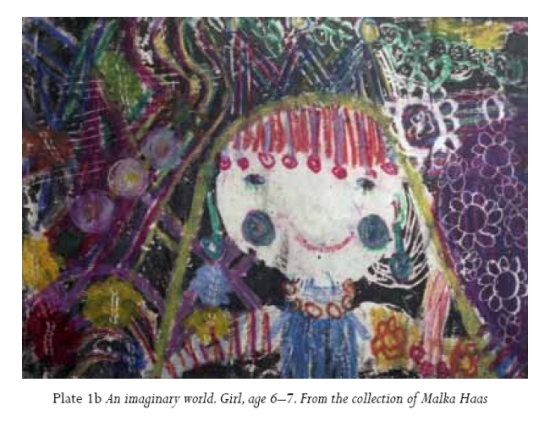By Claire Golomb, Professor Emerita of the Department of Psychology at the University of Massachusetts, USA, and author of the new book The Creation of Imaginary Worlds: The Role of Art, Magic and Dreams in Child Development.
The urge to create imaginary or alternative worlds, to represent the world in drawing, make-believe play, dreams, and stories, is a remarkable human achievement which unfolds in the early childhood years, and represents the child’s deepest thoughts and feelings.

Unlike previous, by now outdated views of child art and pretense play – views that in the past emphasized the immaturity and conceptual deficiency of the child artist and his or her games of make-believe – my more recent studies and those of colleagues highlight the inventiveness and intelligence of the young child who creates, in the realm of child art, an original language, a wholly new vocabulary of forms, colors, and spatial composition that is both meaningful and aesthetically appealing.
In the realm of imaginative play, extensive series of studies have highlighted the importance of the preschooler’s *perspective-taking skills in make-believe play; the ease with which even the young child maintains a dual orientation toward pretense and reality; the ability to synchronize two parallel worlds, which is a mark of flexible thought processes and a form of abstract thinking that promotes perspective-taking, and which expands the mental and emotional horizons of the child.
The preschooler’s ability to create pretense scenarios is a cognitive achievement that is in advance of other mental domains as it fosters perspective-taking, creativity, initiative, and coming to know the developing self and its social world.
The ability to represent imaginary worlds in child art, pretense play, dreams and stories fulfills a vital function for the growing child’s emotional and cognitive development; it is an important source of the child’s creative engagement with his or her world and ought to be fostered by caring adults.
For over 40 years, Claire Golomb taught courses on child development to undergraduate and graduate students of psychology. Her research during those years focused on symbol formation in child art, make-believe play, story construction and the role of gender in those domains. She resides in Waban, Massachusetts, USA.
*Perspective-taking is the ability to take the view of another person into
account, to consider not only one's own view and desires but also the views
another person may have of the same event.
Copyright © Jessica Kingsley Publishers 2011.